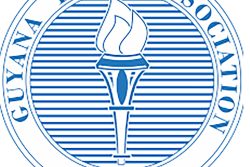Dear Editor,
The latest statistics show that the centre of Christianity, which began in Jerusalem, is now somewhere in the heart of Africa. According to the Christian Science Monitor, Timbuktu, in the mostly Moslem African nation of Mali has recently become the heart of the Christian world. The latest figures show that Christianity (Roman Catholicism to be exact) has grown from 1 billion to 1.2 billion followers.
Figures released Feb. 12 showed that the overall number of Catholics increased to nearly 1.12 billion at the end of 2005, an increase of 1.5 percent from the previous year.
The Catholic growth rate was slightly higher than the rate of overall population increase, which was 1.2 percent. Catholics now represent 17.2 percent of the global population, the Vatican said.
The statistics were released in connection with the presentation of the 2007 edition of the Vatican yearbook, known as the Annuario Pontificio, which catalogues the church’s presence in each diocese.
The church’s population grew fastest in Africa, where the number of Catholics increased 3.1 percent in 2005, about half a percentage point higher than the overall population growth rate on the continent.
In Asia, the number of Catholics was up 2.7 percent, and in the Americas up 1.2 percent. In Europe, there was a very slight increase in the number of Catholics, the Vatican said.
Similar geographical differences were reflected in the number of priests and seminarians.
The number of Catholic priests around the world was 406,411 at the end of 2005. That was an increase of 520, or about 0.1 percent over the previous year.
Broken down by continent, the increase was 3.8 percent in Asia and 3.6 percent in Africa. Europe and the Americas showed a decrease of about half a percentage point in the number of priests, while the number dropped 1.8 percent in Oceania.
According to the Catholic News Service (CNS), the global distribution of priests continued to swing slowly toward Africa and Asia, which at the end of 2005 had 20.3 percent of the world’s priests; in 1985, that number was about 11 percent. Europe continued to lose priests and was home to 48.8 percent of the world total; in 1985, Europe had 58 percent of the world’s priests.
The distribution numbers were relatively unchanged for the Americas, which has about 30 percent of the total number of priests, and for Oceania, which has about 1 percent of the total.
Regarding seminarians, the Vatican said that globally the number increased 1.2 percent in 2005, from 113,044 to 114,439. Africa led the way with an increase of 3.46 percent, followed by Asia with 2.9 percent.
The Americas had an increase in seminarians of 0.6 percent, while Oceania remained virtually unchanged. In Europe, the number of seminarians dropped 1.9 percent.
For every 100 seminarians in the world at the end of 2005, 32 were from the Americas, 26 were Asian, 21 African, 20 European and one from Oceania, the Vatican said.
In Soweto, South Africa, Mass is so crowded at St. Joseph’s Roman Catholic Church that the parishioners spill out into the courtyard, where they huddle close to the doors to hear and be heard. The Catholic Church seems young, active and relevant, growing at a rate so explosive – with nearly 140 million Roman Catholics in Africa – that it’s a vital part of today’s Christian expansion.
Many persons credit this expansion of the Catholic communion in Africa to Pope John Paul II who made 14 trips to Africa, more than any other continent.
It would be an interesting picture that as the Church’s centres of gravity slides south, Western traditions just might be under increased pressure.
Yours faithfully,
Leon Jameson Suseran


